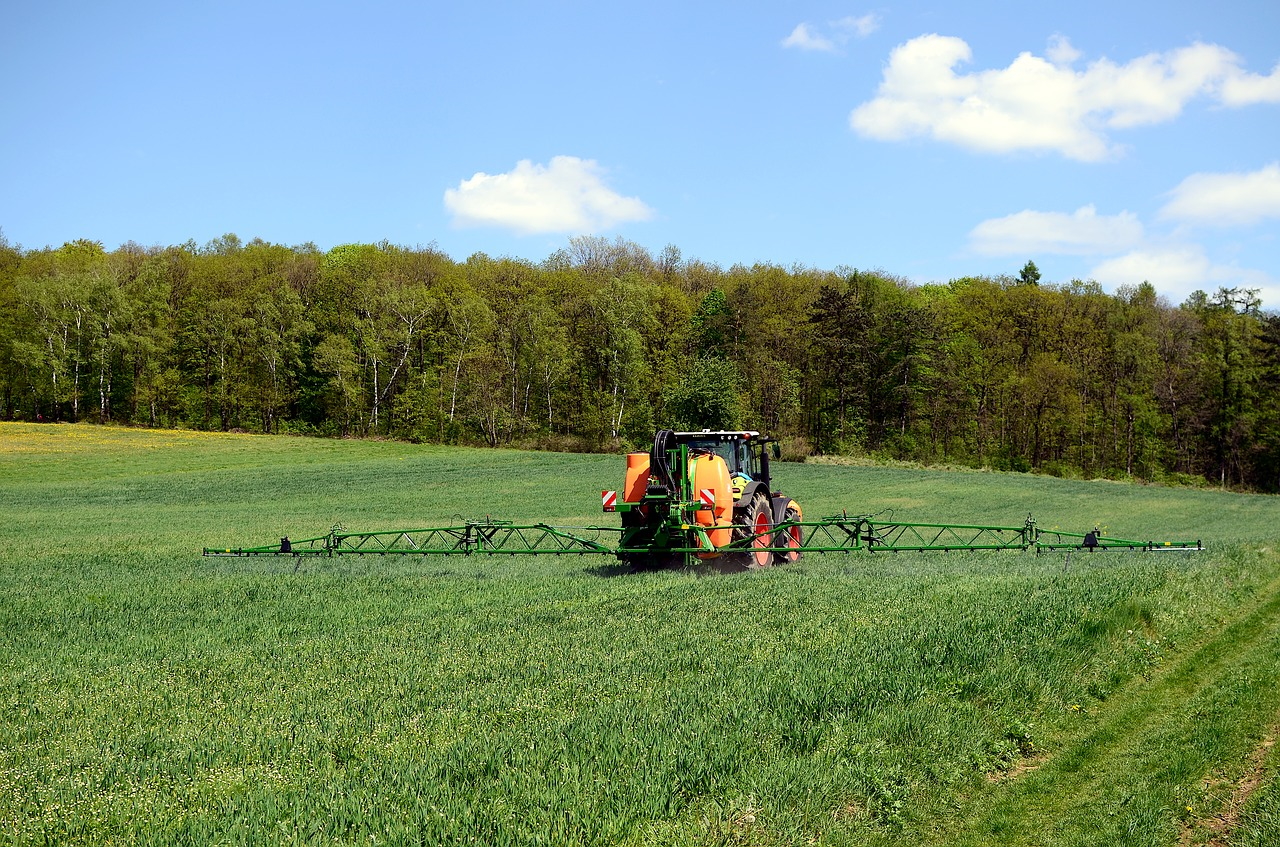Agrochemicals
Growing need for food security and increasing disease propel demand for pest control 8th January 2020
By Tejaswinee Jagtap Senior Research Associate, Agriculture at Markets and Markets
With the increasing demand for food and the reducing area of arable land available for cultivation, there has been an increa

With the increasing demand for food and the reducing area of arable land available for cultivation, there has been an increasing demand for pesticides in agriculture. To combat pest related problems and enhance crop protection, the use of pesticides and fertilizers have increased in various crops such as cereals & grains, oilseeds & pulses, fruits & vegetables among other crops. The pesticides industry has been transformed by several years of robust growth coupled with various environmental regulations for eco-friendly and changing crop mix trends. Increasing awareness about environmental pollution and public health concerns caused by vector-borne diseases are the major factors driving the demand for pest control services across the commercial, residential, livestock, and other industrial applications.
Industrial pest control
The market for pest control was valued at $19.39 billion in 2018; it is projected to grow at a CAGR of 5.04% from 2019, to reach $27.52 billion by 2025.1 The market is primarily driven by chemical pest control techniques due to the high demand for insecticide solutions across the globe by service providers. The increasing awareness of public health has compelled the people to adopt pest control services on a regular basis at residential and commercial levels. The pest control market is driven by rapid urbanization across all regions. Increasing awareness on public hygiene and prevention of vector-borne diseases, coupled with the rising purchasing power parity (PPP) among middle-class populations have fueled the demand for pest control services globally. Also, government initiatives to maintain environmental hygiene are boosting the demand. For instance, the “clean-up” movement in India has proven to be a major driver for the insect pest control industry.
The market for pest control was valued at $19.39 billion in 2018; it is projected to grow at a CAGR of 5.04% from 2019, to reach $27.52 billion by 2025.1 The market is primarily driven by chemical pest control techniques due to the high demand for insecticide solutions across the globe by service providers. The increasing awareness of public health has compelled the people to adopt pest control services on a regular basis at residential and commercial levels. The pest control market is driven by rapid urbanization across all regions. Increasing awareness on public hygiene and prevention of vector-borne diseases, coupled with the rising purchasing power parity (PPP) among middle-class populations have fueled the demand for pest control services globally. Also, government initiatives to maintain environmental hygiene are boosting the demand. For instance, the “clean-up” movement in India has proven to be a major driver for the insect pest control industry.
The industrial pest control market in North America
The US Environmental Protection Agency (EPA) is responsible for regulating the production and use of pesticides in the United States under the Federal Insecticide, Fungicide, and Rodenticide Act (FIFRA) and the Federal Food, Drug, and Cosmetic Act (FFDCA). As per the FAO, pesticide consumption in developing countries will continue to increase in the coming years at a steady pace to meet the growing demand for food and fibre supply. North America accounted for the largest share in the global pest control market, in 2018, with a value of $9.83 billion; however, it is projected to have slow growth during the forecast period since the market is saturated in the region. The market has been facing stiff competition from local service providers who provide cheaper service as compared to larger players in both the North America and European regions. Asia Pacific and South America are projected to have fast growth. Increased hygiene awareness, spending capacity, and urbanization have led to increased demand for pest control services in the region.
Biological control includes the beneficial action of microbials, plant extracts, and predatory insects in managing pests. Rise in need for food security for the growing population and increase in crop loss owing to nutrient deficiency pest and, diseases, along with change in farming practices (from traditional to smart farming conventional), have been of importance to the growth of the global biopesticides market.
The US is estimated to be the largest market for pest control, and the registration of pesticide products is regulated by the US Environment Protection Agency (EPA) at a national level. The US is the leading country in terms of registered active ingredients for pest control products, which has resulted in the growth of the market for pest control products and services. Regulations on the use of chemical insecticides have become stringent in North American and European countries, owing to the environmental concerns arising from their usage. This has led to opportunities for the growth in the demand for biological insect pest control methods. However, there is still a significant demand for synthetic insecticides among public health authorities, livestock farmers, and pest control service providers, as their biological counterparts are environmental-friendly but less effective and require repeated usage for optimum results. Europe is one of the largest contributors to the global biopesticides due to the rise in in use of biopesticides through advanced agricultural techniques and increase in need for organic food security in the European countries.
Agricultural pest control
The global crop protection chemicals market was projected to grow at a CAGR of 5.15% from 2016 to 2021.2The increasing use of crop protection chemicals in developing countries to combat pest attacks encourages the manufacturers to develop in-formulation adjuvants, which enhance the efficacy of the pesticide active ingredients and improve the ease of application. Key players such as Evonik Industries, Clariant, and Solvay are also focusing on conducting research on the development of multifunctional adjuvants that cater to various applications. The increasing need for sustainable pesticides in the American and European countries and the rising adoption of crop protection chemicals in developing countries of these regions are the major factors driving the demand for agricultural adjuvants. North America accounted for the largest share in the agricultural adjuvants market in 2018, followed by Europe, due to the high adoption of adjuvants to enhance the pesticide consumption in countries such as Germany, France, the US, and Canada.
According to the FAO, from 2010 to 2015, growers in the American and Asian countries were the leading adopters of pesticides. There has been an exponential growth in the use of pesticides across the globe since the past three years. However, if the credits of pesticides include enhanced economic potential in terms of increased production of food, and amelioration of vector-borne diseases, their debits have resulted in serious health implications on the environment. This region accounted for almost 30% of the land available on Earth and 60% of the human population, according to the World Bank in 2016. In order to meet the food requirement of this huge population, the use of pesticides has increased significantly in the region. According to FAOSTAT, China is the largest consumer of pesticides and its total consumption in 2016 was 2.03 MMT (2.2 million tons), which was 54.6% of the total world consumption, though consumption of herbicides is low when compared to the Americas and Europe. The markets for herbicides, insecticides, fungicides, and fertilizers are well-established and are in the growing stage. According to FAOSTAT, China is the largest consumer of pesticides and its total consumption in 2016 was 2.03 MMT (2.2 million tons), which was 54.6% of the total world consumption, though consumption of herbicides is low when compared to the Americas and Europe. In 2016, the total herbicide consumption in the region was 3.2% of the global herbicide consumption (0.40 MMT). The size of farms in China is also responsible for the overuse of the pesticides and other crop protection solutions, which uses around more than 30 percent of global fertilizers and pesticides on only 9 percent of the world’s crop land.
Opportunities in biological pest control solutions to replace the banned pesticides
Biological control methods is the fastest growing segment in the pest control market. With the growing popularity of integrated pest management, use of biopesticides and biocontrol agents have grown substantially in the past decade. The ban on neonicotinoid pesticide use in Europe is an example of the acceptance of biological control solutions as compared to chemicals. Growers have started replacing banned older and more toxic active ingredients with biological insecticides. Other future legal actions affecting the grower’s abilities to use established crop protection chemistries would attribute to increased market share for biological pesticides. Companies such as the Woodstream Corporation (US) and its Safer brand are among the key market players in the introduction and use of biological pest control solutions.
Competitive scenario
Some of the major players operating in the global pest control market are Terminix (US), Ecolab (US), Atalian Servest (France), Truly Nolen (US), Rollins Inc. (US), Rentokil Initial Plc (UK), and Ecolab (US). The pesticide suppliers in the pest control market include Bayer CropScience (Germany), BASF (Germany), Syngenta AG (Switzerland), Sumitomo Chemicals Co. Ltd. (Japan), Adama (Israel), FMC Corporation (US), DowDuPont (US) among others. These companies are adopting strategies such as new product launches and mergers & acquisitions for expanding their geographic footprint in the agrochemicals market. For instance, in October 2019, BASF (Germany) launched innovative Pre-emergent herbicide for wheat, which will offer the growers a crop protection solution for controlling weeds such as Phalaris in their fields. In another instance, the Insecticides Ltd. (India) expanded its pesticide production capacity by setting up an Export Oriented Unit in Gujarat which is followed by an investment of around $1 million in 2020.
Some of the major players operating in the global pest control market are Terminix (US), Ecolab (US), Atalian Servest (France), Truly Nolen (US), Rollins Inc. (US), Rentokil Initial Plc (UK), and Ecolab (US). The pesticide suppliers in the pest control market include Bayer CropScience (Germany), BASF (Germany), Syngenta AG (Switzerland), Sumitomo Chemicals Co. Ltd. (Japan), Adama (Israel), FMC Corporation (US), DowDuPont (US) among others. These companies are adopting strategies such as new product launches and mergers & acquisitions for expanding their geographic footprint in the agrochemicals market. For instance, in October 2019, BASF (Germany) launched innovative Pre-emergent herbicide for wheat, which will offer the growers a crop protection solution for controlling weeds such as Phalaris in their fields. In another instance, the Insecticides Ltd. (India) expanded its pesticide production capacity by setting up an Export Oriented Unit in Gujarat which is followed by an investment of around $1 million in 2020.
References:
1. Markets&Markets. Pest Control Market by Pest Type, April 2019 (https://www.marketsandmarkets.com/Market-Reports/pest-control-market-144665518.html).
2. Markets&Markets. Crop Protection Chemicals Market by Type, August 2016 (https://www.marketsandmarkets.com/Market-Reports/crop-protection-380.html)
Author:
Tejaswinee Jagtap, Senior Research Associate, Agriculture, at Markets and Markets
Further information:
- http://www.panna.org/blog/us-and-world-pesticide-use
- http://www.fao.org/faostat/en/#data/EP/visualize
- https://krishijagran.com/product-launches/basf-launches-innovative-pre-emergent-herbicide-zidua-for-wheat/
- https://www.actascientific.com/ASAG/pdf/ASAG-01-0012.pdf



